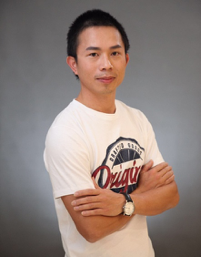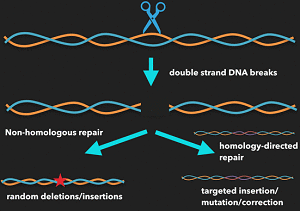Distinguished iNANO Lecture: CRISPR Gene Editing and Genetically Tailored Pigs for Regenerative Medicine
Assoc. professor Yonglun Luo (Alun), Department of Biomedicine, Aarhus University
Info about event
Time
Location
iNANO AUD (1593-012), Gustav Wieds Vej 14, 8000 Aarhus C

CRISPR Gene Editing and Genetically Tailored Pigs for Regenerative Medicine
This talk will focus on the principal and development of CRISPR gene editing technology. I will highlight our recent research and contributions to the CRISPR-Cas9 toolbox. Furthermore, my talk will use pigs as practical model for regenerative medicine.
The Clustered Regularly Interspaced Short Palindromic Repeats (CRISPR)-associated protein 9 (Cas9) has overcome most technical challenges encountered in pig genome engineering. During the last two years, we have developed several improvements to enhance and simplify CRISPR gene editing (1-4). By multiplexed CRISPR gene editing, we have successfully generated PERVs-inactivated pigs in collaboration Prof. George Church’s group and a broad international team (1), which pave the way for safer pig-to-human transplantation. Currently, we further apply the CRISPR gene editing technology to determine the best genetic changes to combat immune rejection. Other approaches including growing human organs in pigs, stem cells therapy, 3D organoids, in vitro tissue engineering with human stem cells and 3D-printing are being developed to combat degenerative diseases.
One unmet technical need of CRISPR gene editing is efficient and targeted in vivo delivery. Nanoscience will play a crucial role for the development of novel delivery methods of the CRISPR-Cas9 components in vivo, and regenerative medicine.

References:
(1) Zhou Y. et al. (2016) Enhanced genome editing in mammalian cells with a modified dual-fluorescent surrogate system. Cell Mol Life Sci. 73(13):2543-63.
(2) Vad-Nielsen J. et al. (2016) Golden Gate Assembly of CRISPR gRNA expression array for simultaneously targeting multiple genes. Cell Mol Life Sci. 73(22):4315-4325.
(3) Lin L. et al. (2017) Fusion of SpCas9 to E. coli Rec A protein enhances CRISPR-Cas9 mediated gene knockout in mammalian cells. J Biotechnol. 247:42-49.
(4) Jensen KT. (2017) Chromatin accessibility and guide sequence secondary structure affect CRISPR-Cas9 gene editing efficiency. FEBS Lett. 591(13):1892-1901.
(5) Niu D. et al. (2017) Inactivation of porcine endogenous retrovirus in pigs using CRISPR-Cas9. Science. 357(6357):1303-1307.
Host: Associate professor Ken Howard, iNANO, Aarhus University
Coffee, tea and buns will be served from 10:00 in front of iNANO AUD